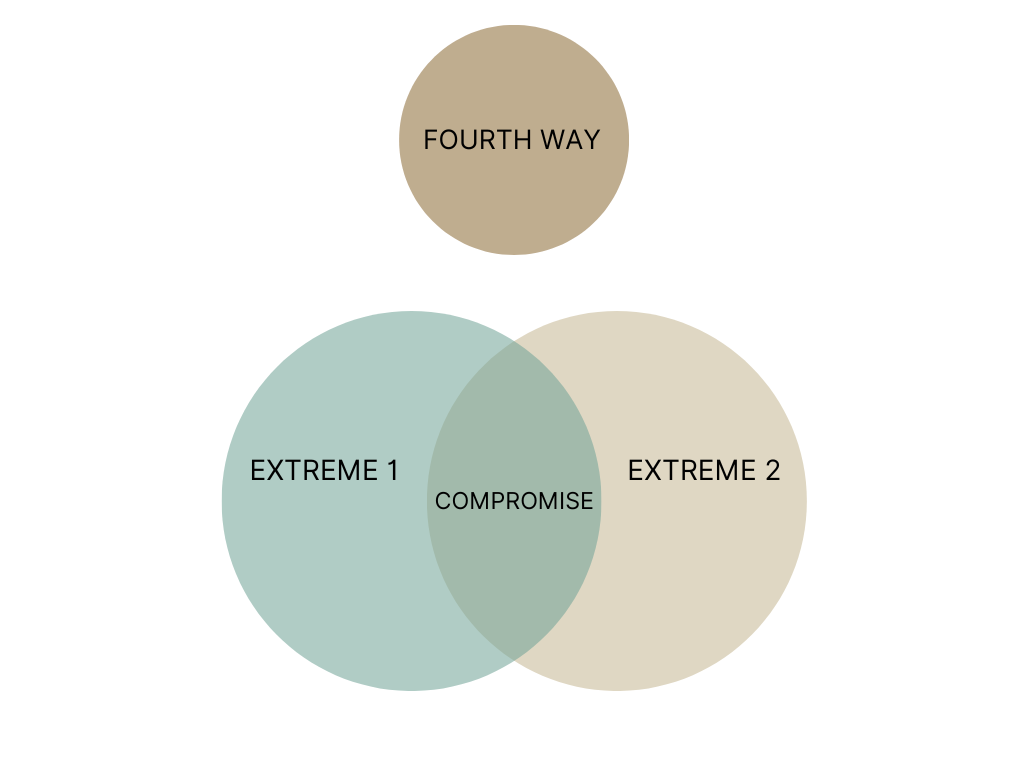The Core Question
“Why am I tying my identity, emotions, or self-worth to this situation, person, or outcome?”
This philosophy starts with a practical question to ask yourself, especially when feeling stressed, seeking validation, or facing a difficult choice:
This question is a tool for clarity. Life involves countless pressures that shape who we think we should be. This question acts as a pause button, inviting you to look honestly at why something has power over you. It reveals the difference between goals that are truly yours and those you’ve absorbed from outside influences, guiding you back toward authentic, effective action.
For example, if a project doesn’t succeed, asking “Why does this matter so much?” might reveal if your worth is tied too closely to achievement. If you hesitate to leave a situation, the question might uncover whether you’re staying out of genuine alignment or fear.
Acceptance: The Foundation
This means honestly acknowledging and accepting yourself right now—strengths, flaws, and contradictions—without judgment. It is the necessary starting point for any effective action.
The Purpose of Acceptance
This isn’t a way to excuse bad behavior (“This is just who I am”). By acknowledging and accepting the reality of where you are, you remove the self-criticism and shame that block change. It allows you to work on improvements from a place of clarity, which is more sustainable than growth fueled by self-loathing. It’s about seeing clearly so you can act effectively.
The Three Pillars
Taoism: Working With Life
Taoism offers principles for flowing skillfully with life, rather than fighting against it. It’s built on knowing when to act decisively and when to adapt, maintaining your integrity amidst change.
The Point of Taoism
Taoism doesn’t say you should be passive or give up completely when things are difficult. Its focus is on discerning the difference between forcing an outcome and taking action that works with the situation’s natural dynamics. It helps you recognize when pushing harder isn’t the answer, and when a different approach is more effective. It cultivates trust in the process and reduces unnecessary friction by letting go of excessive control.
Stoicism: Focusing Your Energy
Stoicism teaches you to concentrate your energy on what you can actually control: your judgments, your responses, and your actions. It builds resilience by framing challenges as opportunities to practice your principles.
The Premise of Stoicism
Stoicism isn’t about suppressing emotions or pretending things don’t hurt. It’s about directing your emotional energy productively while acknowledging and processing your emotions. Instead of dwelling on uncontrollable events, you focus on crafting your response. By investing your limited energy wisely, you maintain inner stability and don’t get stuck when obstacles appear.
How These Pillars Work Together
These three pillars create a balanced and self-correcting system that keeps you from abandoning your core self.
Fourth Way Solutions
A core facet of the decision-making that goes into applying strategies from The Answer is Inside is the concept of fourth-way solutions.
Not all situations are worth choosing one extreme or another or compromising over. The fourth way

Benefits of Integrating This Framework
Guidelines for Application
The Answer is Inside is a practical toolkit. Like any tool, its effectiveness depends on how it’s used. The following guidelines are not moral judgments, but observations on how the system functions.
- For these tools to work, you must be honest with yourself about what you’re actually trying to achieve.
- The three pillars are designed to work together; using one dishonestly will contradict the others and cause your efforts to fail.
- Using these principles to manipulate others or justify harm will eventually backfire through the natural consequences of your actions.
- Knowing these ideas is not enough; only consistent practice will allow you to apply them effectively under real-life pressure.
